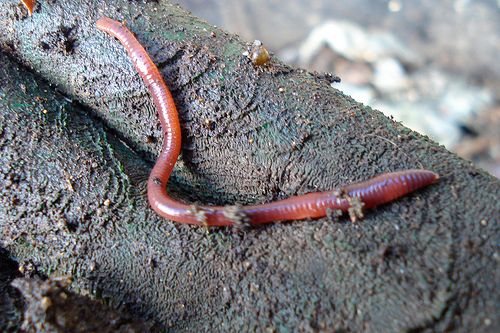Discover How Lake Hickory Bait Can Boost Your Lawn’s Growth and Vitality
Discover How Lake Hickory Bait Can Boost Your Lawn’s Growth and Vitality
Blog Article
Red Wigglers: The Unsung Heroes of Organic Waste Recycling
Red wigglers, or Eisenia fetida, function as crucial agents in the organic waste recycling process, transforming disposed of products right into beneficial vermicompost. Their reliable breakdown of raw material not only boosts soil quality but also adds to sustainable waste administration methods. As the world progressively looks for options to deal with waste buildup and enhance farming efficiency, comprehending the role of these worms becomes important. What systems allow them to thrive in garden compost settings, and exactly how can they be successfully used in both domestic and commercial setups? Exploring these questions discloses the wider effects of vermicomposting in our environmental landscape.
What Are Red Wigglers?
The impressive strength of red wigglers, clinically called Eisenia fetida, underscores their essential role in natural waste recycling. These small, reddish-brown earthworms are commonly discovered in breaking down natural matter, such as garden compost stacks and manure lots. Lake Hickory Bait. Unlike other earthworm varieties, red wigglers prosper in nutrient-rich environments and are extremely reliable at breaking down natural materials, making them necessary for vermicomposting

(Lake Rhodhiss Bait)In addition to their duty in waste reduction, red wigglers add to soil wellness by improving dirt structure and oygenation with their tunneling tasks (Lake Hickory Bait). Their existence in composting systems not only improves disintegration prices but additionally promotes a sustainable approach to squander administration, showing their relevance in eco-friendly conservation efforts
Benefits of Composting With Worms
Composting with worms, especially red wigglers, uses various benefits that improve both waste monitoring and dirt wellness. These worms efficiently damage down organic waste, transforming it into nutrient-rich vermicompost that enhances dirt. This process accelerates disintegration, permitting for a much faster recycling of kitchen scraps and other natural products compared to standard composting approaches.
In addition, the vermicompost generated by red wigglers is including valuable microorganisms, which aid improve soil framework, oygenation, and moisture retention. This enhances the overall health of plants, advertising energetic growth and boosted returns in gardens and farming setups. Moreover, the use of worms in composting reduces the manufacturing of greenhouse gases, such as methane, adding to a much more lasting waste administration system.

Just How to Start Vermicomposting
Establishing a vermicomposting system is an uncomplicated process that can produce considerable advantages for both waste monitoring and dirt enrichment. To begin, pick an ideal container, such as a plastic container or wood box, with adequate air flow holes to make certain proper airflow. The dimensions should preferably be around 2 feet by 3 feet, enabling adequate space for the worms to prosper.
Following, prepare bed linen material, which can contain shredded paper, cardboard, or coconut coir. This bedding must be moistened to produce an appropriate habitat for the worms. When the bed linens remains in location, introduce red wigglers (Eisenia fetida) into the bin, commonly around one extra pound of worms for each square foot of surface location.
Complying with the placement of worms, include natural waste, such as vegetables and fruit scraps, coffee grounds, and crushed eggshells. Avoid adding dairy, meat, or oils, as these can develop smells and draw in insects. Ultimately, place the container in a shaded, temperature-controlled location to keep optimum conditions for worm activity. With these steps, you will properly initiate a vermicomposting system that adds to sustainable waste management and improves your soil.
Keeping a Healthy Worm Container
(Red Wiggler Express)Keeping a worm bin prospering needs routine focus and care to make sure the wellness of the red wigglers and the efficiency of the composting process. Appropriate maintenance starts with keeping track of the dampness degrees; the container should perspire yet not saturated. A great general rule is to preserve an uniformity similar to a wrung-out sponge.
Aeration is essential also. Gently mixing the bed linens and food scraps every couple of weeks avoids compaction and guarantees that all worms have access to oxygen. In addition, it is websites crucial to feed the worms suitably. A balanced diet of fruit and vegetable scraps, coffee premises, and crushed eggshells ought to be offered in small amounts to avoid overfeeding, which can cause smells and insects.
If the container becomes too warm or cold, the worms might become stressed out. By faithfully handling these aspects, one can preserve a durable and effective worm bin.
Influence On Lasting Living
The successful maintenance of a worm bin not only benefits the health of red wigglers however likewise adds substantially to lasting living methods. By reusing natural waste, such as kitchen area scraps and yard debris, red wigglers aid draw away considerable amounts of material from landfills. This decrease in waste not only lowers greenhouse gas emissions yet likewise minimizes the ecological concern related to waste administration.
In addition, the spreadings produced by red wigglers work as a nutrient-rich natural plant food, improving dirt health and promoting plant development. This natural choice to chemical fertilizers sustains sustainable farming and horticulture practices, reducing dependence on artificial inputs that can harm communities. Furthermore, worm composting promotes understanding of waste administration, motivating people and neighborhoods to take on even more sustainable practices.

Final Thought
In summary, red wigglers offer as important contributors to natural waste recycling via their effective disintegration of organic products. By integrating vermicomposting right into waste management methods, individuals and areas can dramatically lower waste while promoting environmental sustainability.
Report this page